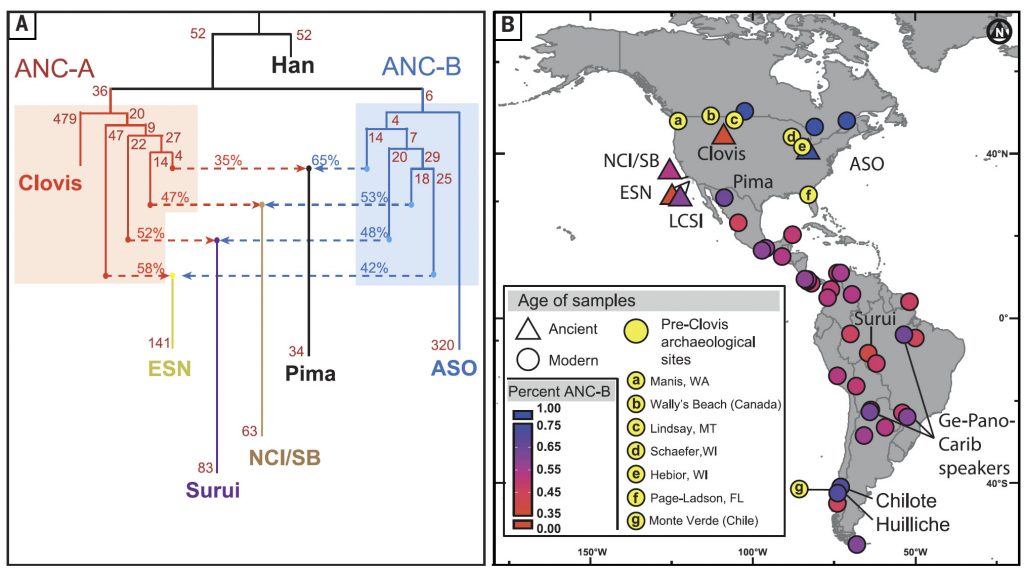New paper (behind paywall), Ancient human parallel lineages within North America contributed to a coastal expansion, by Scheib et al. Science (2018) 360(6392):1024-1027.
Abstract:
Little is known regarding the first people to enter the Americas and their genetic legacy. Genomic analysis of the oldest human remains from the Americas showed a direct relationship between a Clovis-related ancestral population and all modern Central and South Americans as well as a deep split separating them from North Americans in Canada. We present 91 ancient human genomes from California and Southwestern Ontario and demonstrate the existence of two distinct ancestries in North America, which possibly split south of the ice sheets. A contribution from both of these ancestral populations is found in all modern Central and South Americans. The proportions of these two ancestries in ancient and modern populations are consistent with a coastal dispersal and multiple admixture events.

good fit to the data (Z = 0.888) (15). (B) Scale of ANC-B ancestry from 0% in Anzick-1 to 100% in the ASO and modern Algonquian-speaking populations.
Interesting excerpts:
We modeled the population history of the Americas using qpGraph (15, 21) and found that the ASO and Mexican (Pima) populations were consistently outgroups to sets of clades formed by Anzick-1, SAM(Surui), and ESNpopulations in analyses that did not involve admixture (fig. S4) (15, 21). Fit between the data and the tree could be significantly improvedwhenmodeling ancient Californian, modern Pima, and Surui populations through admixture of two basal ancestries that we call ANC-A and ANC-B.
The clear separation of ANC-A and ANC-B ancestries is further supported by the sharing of unambiguous, derived haplotype segments in modern Surui and Pima populations (27) with both the ASO (CK-13) and Anzick-1 individuals (fig. S5) (15). The results of this analysis are consistent with ancient substructure and a separation of at least a few thousand years between the ANC-A and ANC-B populations prior to merging (fig. S6) (15). The summary of evidence presented here allows us to reject models of a panmictic “first wave” population from which the ASO diverged after the peopling of South America or in which solely the ANC-A population contributed to modern southern branch populations. Because populations vary in ANC-A and ANC-B proportions but do not differ significantly in their affinity to non-American populations (table S7) (15), it is possible that ANC-A and ANC-B split within America as opposed to Beringia where there would have been ongoing gene flow with Siberia.
Related:
- Ancient Patagonian genomes suggest origin and diversification of late maritime hunter-gatherers
- Ancient DNA reveals temporal population structure of pre-Incan and Incan periods in South‐Central Andes area
- Paternal lineages mainly from migrants, maternal lineages mainly from local populations in Argentina
- Review article about Ancient Genomics, by Pontus Skoglund and Iain Mathieson